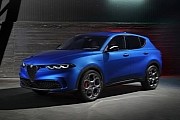history
Romeo is not only a thespian Shakespearean character but also represents part of an Italian mechanical deity, devoted to constructing automobiles at godly standards for mortal drivers. It is the Alfa without the Omega for ever since it began producing cars back in 1910, never has its activity been threatened by permanent halting. The Alfa Romeo coat of arms looks like it bears the marks of early religious involvement with a red cross on a white background reminding of the crusades juxtaposed with a dragon headed snake that resembles the devilish creature slain by Saint George but it was actually designed by human heads with only one purpose in mind: devotion and performance.
Although the firm is widely deemed as 100% Italian, its beginnings prove otherwise. The company was originally founded as Societa Anonima Italiana Darracq by French automobile industry entrepreneur Alexandre Darracq with help from Italian investors in 1906. One of the high-rollers, an aristocrat known by the name of Ugo Stella, later became chairman of the newly formed Milano- based corporate entity that would have a hard time selling cars by 1909.
Ugo then took a decisive step by founding a new motor company in association with the other investors and Darracq. The ALFA, an acronym for Anonima Lombarda Fabbrica Automobili translated to Lombard Automobile Factory, Public Company. The early Alfas were undoubtedly some fine pieces of machinery, and helped the company succeed in making cars that appealed to the Italian market and that would later become a corner stone in auto-engineering and design. In 1915, Neapolitan Nicola Romeo – a mathematical teacher – took over the company's management during World War I and brought significant changes to the factory's assembly lines in order to comply with the high demand of military equipment at the time.
Alfa Romeo has also been involved in racing, having won competitions ever since the birth of their first 24 HP model in 1910 – which entered the famous Sicilian Targa Florio competition. Soon after its fulminatory start, many victories would come on equally numerous racing tracks all over Europe. The immense success of the Alfa Romeo models throughout the upcoming 5 decades – whose image benefited greatly from their impressive performances in motor racing – did not translate into economic growth for the Italian company. Consequently, Alfa Romeo was purchased by Finmeccanica S.p.A. – a government-controlled industrial group – some 50 years later, in order to avoid bankruptcy.
However, the state would not hold on to it too long and eventually gave it up (again) because of its financial difficulties. Before becoming stray and disoriented, Fiat adopted it as one of the group's subsidiaries. Alfa has been rolling with Fiat since 1986.
The marque is one of the few European ones currently unavailable in the US, having halted all exports to the North American market in 1995. However, it may be planning a return to US grounds through a mutually beneficial partnership with luxury manufacturer Maserati.
expand




















































